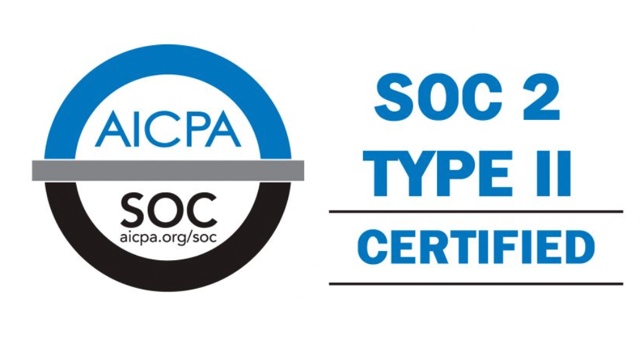
From 100 to 1 million Transfers: Scaling MFT for Enterprise Growth
From 100 to 1 million Transfers: Scaling MFT for Enterprise Growth Ever wondered what happens when your daily file transfers multiply by
Some browsers/operating systems require additional configuration to correctly render the Sterling B2B Integrator user interface in certain languages.
Use the procedures provided in this section to properly configure a browser to display the Sterling B2B Integrator user interface in the appropriate language.
The Sterling B2B Integrator user interface supports several languages. A portion of the online documentation is also available in multiple languages.
If… | then… |
|---|---|
| Sterling B2B Integrator is on a server that already supports these languages, | you do not need to install any additional fonts. |
| you are installing on a server that is only setup for the Latin alphabet and you have users who need to view the Sterling B2B Integrator user interface in any of the Asian languages, | you need to have the fonts for these languages installed. |
To test this, create a user with one of the other languages and set up their browser to use that language as its primary language. Log in to the system and review the user interface. If you see a mixture of English and the new language, your configuration is not correct. You will need to verify the browser is setup correctly and review the fonts installed on the server.
The installation of additional fonts/languages on the server should be done in coordination with your technical support team. Be sure to include a Unicode Sans Serif font on your server.
In order for your browser to display the Sterling B2B Integrator user interface and address bar text correctly in a foreign language, you must specify the appropriate language preference code for the browser.
Sterling B2B Integrator 5.2.3 supports the following language preference codes:
You may need to add these supported codes as a custom language preference code in your browser.
The following is an example of how to configure a client machine display for an IE window.
The newly added language should now appear first in the Language listing.
Some languages require the use of special fonts to properly display the Sterling B2B Integrator user interface. The client computer must be configured to display these types of fonts. Each Windows client must be configured.
The following is an example of how to change the default browser font for an Internet Explorer (IE) window.
To configure a client machines display for IE:
To use special characters, such as for various languages, the client computer must be configured to display these types of characters. In order for Unicode characters to display correctly in the application, each Windows client must be configured.
The following is an example of how to configure a client machine display for an Internet Explorer (IE) window.
To configure a client machines display for IE:
When Sterling B2B Integrator is ready for deployment, each user must clear the browser and Java Plugin caches on their client systems before you start Sterling B2B Integrator. This requirement applies to all browsers.
To clear the browser and java caches, do the following:
When you use Sterling B2B Integrator without any customizations, you need to set the General Browser settings for your Internet Explorer to obtain the best browser performance.
To set your general browser settings:
The Internet Options window opens to the General tab.
The Temporary Internet Files and History Settings window opens.
The browser is now set to check for updates to pages everytime a page is accessed rather than relying upon a cached version.
When you use Sterling B2B Integrator without any customization, you need to set security settings for your Internet Explorer to obtain the best browser performance.
To configure the Internet Explorer security and privacy settings:
Note: For Internet Explorer version 11 perform the following:
From the Internet Explorer menu, select Tools > Internet Options > Local Intranet > Sites.
Choose Automatically Detect Intranet Network.
Restart Internet Explorer.
To ensure Document Mode in Internet Explorer is set as 11 perform the following:
Open Internet Explorer and right-click on browser.
Set the value as 11 in the Document Mode drop-down.
|
Internet Explorer Security Setting
|
Sterling B2B Integrator
|
|---|---|
| .NET Framework | |
| Loose XAML | Enable |
| XAML browser applications | Enable |
| XPS documents | Enable |
| .NET Framework-reliant Components | |
| Permissions for components with manifests | High Safety |
| Run components not signed with Authenticode | Enable |
| Run components signed with Authenticode | Enable |
| ActiveX Controls and Plugins | |
| Allow previously unused ActiveX controls to run without prompt | Enable |
| Allow Scriptlets | Enable |
| Automatic prompting for ActiveX controls | Enable |
| Binary and script behaviors | Enabled |
| Display video and animation on a webpage that does not use external media player | Disable |
| Download signed ActiveX controls | Prompt |
| Download unsigned ActiveX controls | Prompt |
| Initialize and script ActiveX controls not marked as safe for scripting | Prompt |
| Run ActiveX controls and plugins | Prompt/Enable |
| Script ActiveX controls marked as safe for scripting | Enable |
| Downloads | |
| Automatic prompting for file downloads | Enable |
| File download | Enable |
| Font download | Prompt |
| Enable .NET Framework setup | Enable |
| Java VM | |
| Java permissions | Medium safety |
| Miscellaneous | |
| Access data sources across domains | Enable |
| Allow META REFRESH | Enable |
| Allow scripting of Internet Explorer web browser control | Enable |
| Allow script-initiated windows without size or position constraints | Enable |
| Allow webpages to use restricted protocols for active contents | Prompt |
| Allow websites to open windows without address or status bars | Enable |
| Display mixed content | Prompt |
| Do not prompt for client certificate selection when no certificates or only one certificate exists | Enable |
| Drag and drop or copy and paste files | Prompt |
| Include local directory path when uploading files to a server | Enable |
| Installation of desktop items | Prompt |
| Launching applications and unsafe files | Prompt |
| Launching programs and files in an IFRAME | Prompt |
| Navigate sub-frames across different domains | Enable |
| Open files based on content, not file extension | Enable |
| Software channel permissions | Medium safety |
| Submit non-encrypted form data | Prompt |
| Use Phishing Filter | Disable |
| Use Pop-up Blocker | Disable |
| Userdata persistence | Enable |
| Websites in less privilged web content zone can navigate into this zone | Prompt |
| Scripting | |
| Active scripting | Enable |
| Allow Programmatic clipboard access | Prompt |
| Allow status bar updates via script | Enable |
| Allow websites to prompt for information using scripted windows | Enable |
| Scripting of Java applets | Enable |
| User Authentication | |
| Logon | Prompt for user name and password |
Sterling B2B Integrator - User Interface
Navigating Sterling B2B Integrator
Accessing the User Interface
Browse Categories
Share Blog Post

From 100 to 1 million Transfers: Scaling MFT for Enterprise Growth Ever wondered what happens when your daily file transfers multiply by

In today’s fast-paced world of data analytics and AI, optimizing your data infrastructure is key to unlocking valuable insights and driving innovation.

In today’s fast-paced world of data analytics and AI, optimizing your data infrastructure is key to unlocking valuable insights and driving innovation.
We are a forward-thinking technology services provider dedicated to driving innovation and transformation across industries.


| Cookie | Duration | Description |
|---|---|---|
| cookielawinfo-checkbox-analytics | 11 months | This cookie is set by GDPR Cookie Consent plugin. The cookie is used to store the user consent for the cookies in the category "Analytics". |
| cookielawinfo-checkbox-functional | 11 months | The cookie is set by GDPR cookie consent to record the user consent for the cookies in the category "Functional". |
| cookielawinfo-checkbox-necessary | 11 months | This cookie is set by GDPR Cookie Consent plugin. The cookies is used to store the user consent for the cookies in the category "Necessary". |
| cookielawinfo-checkbox-others | 11 months | This cookie is set by GDPR Cookie Consent plugin. The cookie is used to store the user consent for the cookies in the category "Other. |
| cookielawinfo-checkbox-performance | 11 months | This cookie is set by GDPR Cookie Consent plugin. The cookie is used to store the user consent for the cookies in the category "Performance". |
| viewed_cookie_policy | 11 months | The cookie is set by the GDPR Cookie Consent plugin and is used to store whether or not user has consented to the use of cookies. It does not store any personal data. |
Thank you for submitting your details.
For more information, Download the PDF.
Thank you for registering for the conference ! Our team will confirm your registration shortly.
Invite and share the event with your colleagues
IBM Partner Engagement Manager Standard is the right solution
addressing the following business challenges
IBM Partner Engagement Manager Standard is the right solution
addressing the following business challenges
IBM Partner Engagement Manager Standard is the right solution
addressing the following business challenges